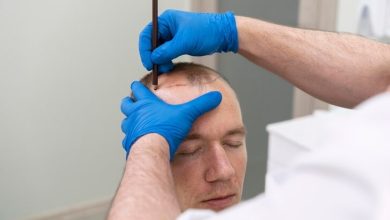What Is Telehealth and How Does It Work?

Doctors have integrated medicine with technology for years. You can also research various conditions and symptoms online with just a few clicks. You can also order anything, including supplements, prescriptions, or bacon, and have it delivered to your home. However, to see your doctor, you still had to visit their office and sit in a patient-filled waiting room. Now with Telehealth Bridgewater, the technology has made health care more convenient. Telehealth is quickly expanding and changing how millions of people receive health care, significantly becoming a vital part of the healthcare system. Here is a look at what telehealth is and how it works.
What Exactly Is Telehealth?
Telehealth, also known as telemedicine, is a term that refers to how your doctor can use technology to communicate with you without being in the same room. These ways include; emails, video chats, phone calls, and text messages. This technology is also known as m-health, digital medicine, or e-health. Telehealth allows you to meet medical experts from the comfort, safety, and convenience of your home. With this technology, you can access clinicians more easily than ever before.
Who Uses Telehealth?
If your doctor offers telehealth, all you require to use the service is reliable internet and a smartphone or computer. While telehealth is convenient for everyone, this tool is particularly useful if you require medical care. At the same time, away from home, you live in a rural area far from the doctor’s office or have limited time, movement, or transportation.
How Does Telehealth Work?
You can get telehealth medical services in different ways based on what your doctor offers. The common ways how telehealth works include;
A Patient Portal
A patient portal and virtual appointments. When it comes to a patient portal, patients can send and receive emails from their nurse or doctor, set up appointments, and request prescription refills. Your doctor can also send you imaging or lab test results and explain their meaning. This is often quicker than waiting to talk to them via phone.
Virtual Appointments
Some medical providers can allow you to have an appointment via a video conference or phone call. You can often have virtual appointments with urgent care clinics and behavioral and mental health professionals.
Telehealth Is Ideal for Many Problems, But Not All
Telehealth can do many things but can’t replace all your doctor visits. For long-term diseases, you can use telehealth to share home readings like blood sugar or blood pressure levels and talk to your provider about them. Virtual urgent care makes it easier to find out if you require to go to your doctor’s office. Problems like the common cold can be easily treated at home. However, problems such as sore throat might require in-person tests. An earache might be a sign of an infection that requires closer care. Also, you can’t undertake surgery online, but your doctor can use telehealth to examine how you are healing. In some cases, an in-person examination is the only way for your provider to make a diagnosis.
Ultimately, telehealth has enhanced the delivery of medical treatment without having to visit the doctor’s office physically. For best results, consider trying the technology earlier, beefing up your bandwidth, and be prepared by writing down the symptoms and medical assistant history. Examine your insurance plan to find out what is covered under telehealth. If your insurance coverage does not include telehealth, you can pay a fixed fee to use it.




